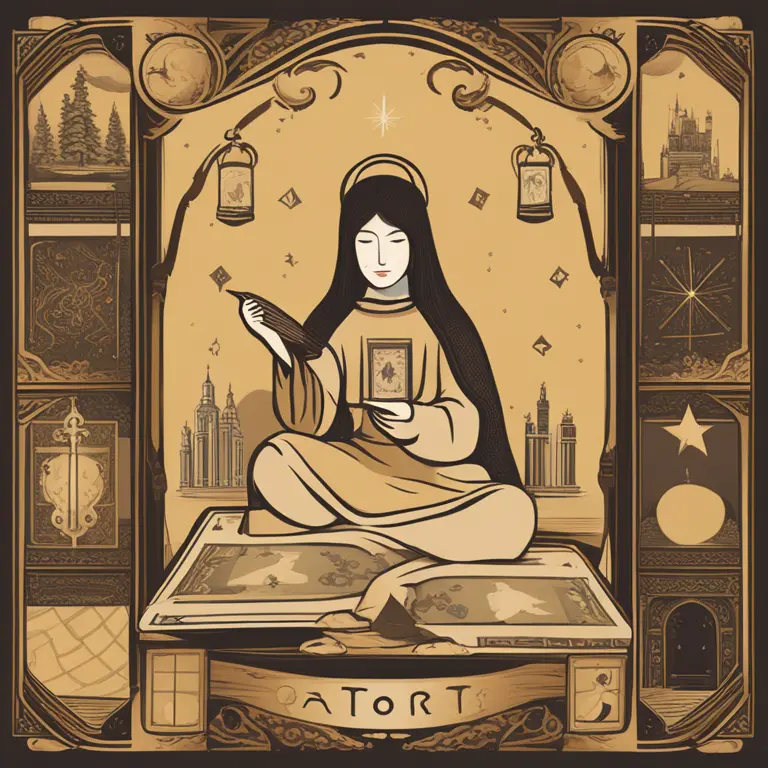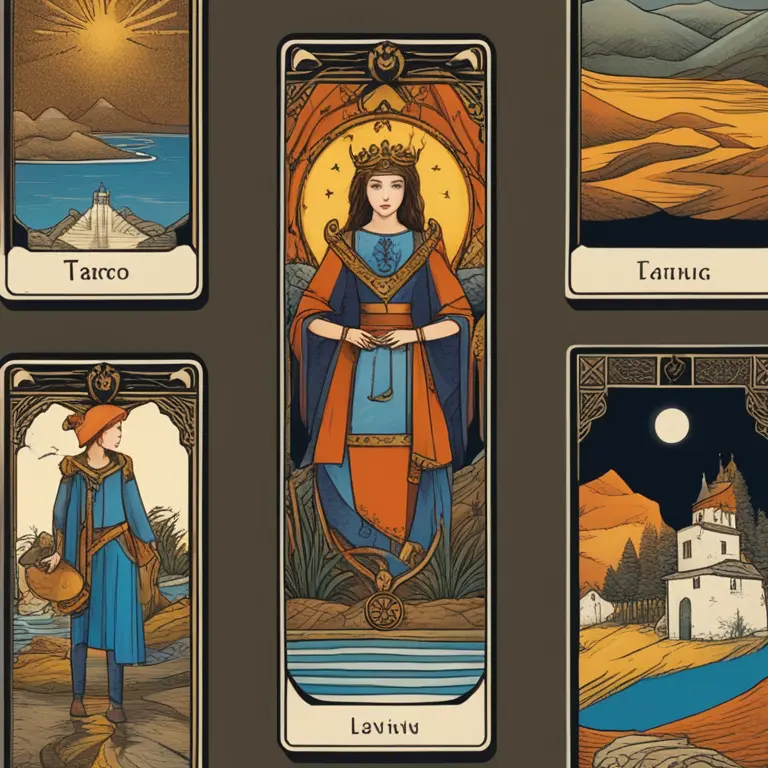
A Brief History of Tarot
The origins of tarot are shrouded in mystery, with some suggesting its roots can be traced back to ancient Egypt, while others point to medieval Europe. The tarot deck, as it's known today, consists of 78 cards and is thought to have evolved from playing cards in the 15th century. It became more widely used for divination purposes in the 18th century when the practice of cartomancy, or card reading for the purpose of fortune-telling, gained popularity. Throughout the ages, tarots have been embraced by various cultures and are now a key component in the repository of mystical and esoteric traditions.

Structure of a Tarot Deck
A standard tarot deck is divided into two main sections: the Major Arcana and the Minor Arcana. The 22 Major Arcana cards represent significant life themes and lessons, and each one features symbolic imagery and archetypal figures. The 56 Minor Arcana cards are akin to a traditional deck of playing cards, divided into four suits – Cups, Pentacles, Swords, and Wands – each containing 14 cards that correspond to everyday situations. The Minor Arcana includes 10 numbered cards and four court cards in each suit: Page, Knight, Queen, and King, which symbolize different aspects of personality or life stages.

Interpreting Tarot Cards
Tarot reading is an art that combines intuition with an understanding of the symbolic meaning of the cards. Each card has a unique meaning which can alter depending on its position, the cards around it, and even the question or situation at hand. Tarot practitioners believe the cards can provide insights into the past, present, and future, although they often emphasize that the future is not fixed and that the cards should be used as a guide rather than a definitive prediction.

Common Tarot Spreads
The layout of cards in a tarot reading is known as a spread. The most basic is the one-card draw, which offers a concise reflection. More complex spreads include the three-card spread representing past, present, and future, or the Celtic Cross, which gives a more detailed view of various aspects of a situation. Each position in a spread has a specific meaning, and when a card lands in that position, its interpretation is colored by that meaning.

Tarot in Modern Times
In contemporary society, tarot reading has seen a resurgence in popularity, possibly as a counterpoint to our fast-paced, technology-driven lives. People turn to tarot for personal reflection, spiritual growth, and decision-making assistance. With online platforms and apps now offering tarot services, the accessibility of tarot readings has expanded, allowing more people to explore its potential for personal empowerment and self-discovery.
Tarot and Astrology
Tarot and astrology often intertwine, with many tarot readers incorporating astrological aspects into their readings. Certain cards are associated with specific zodiac signs and planets, which can add an additional layer of depth to a reading. For example, one could correlate the fiery ambition of the Aries sign with the dynamic energy of the Wands suit or the emotional sensitivity of Cancer with the intuitive Cups.
A Growing Practice
As we approach the future, the practice of tarot continues to evolve. Predictions and insights for 2024 and beyond can be enriched with an understanding of tarot symbology. The practice encourages self-reflection and mindfulness, acting as a tool for guidance rather than a strict roadmap. As we navigate an ever-changing world, tarot stands as a beacon for those seeking knowledge within and beyond.
Published: 2/8/2024
Modified: 2/8/2024
More predictions
Come back here soon to learn more about yourself and your future


Do Tarot Cards Foresee Future Events?
Explore the captivating world of tarot and its capacity to reveal insights about the future in this comprehensive article.


The Tarot Card Associating with Aquarius
Discover which tarot card embodies the traits of Aquarius, tying in celestial intuition with the wisdom of the tarot.


The Sideways Tarot Phenomenon: Interpretations & Meanings
Explore the significance of tarot cards that appear sideways in spreads and how they alter traditional interpretations in your tarot practice.